Gardening 101: This is How to Grow an Amazing Garden
Heads up: I’ll earn a small commission if you buy something after clicking a link in this post. I only link to products I’d recommend to my best friend.
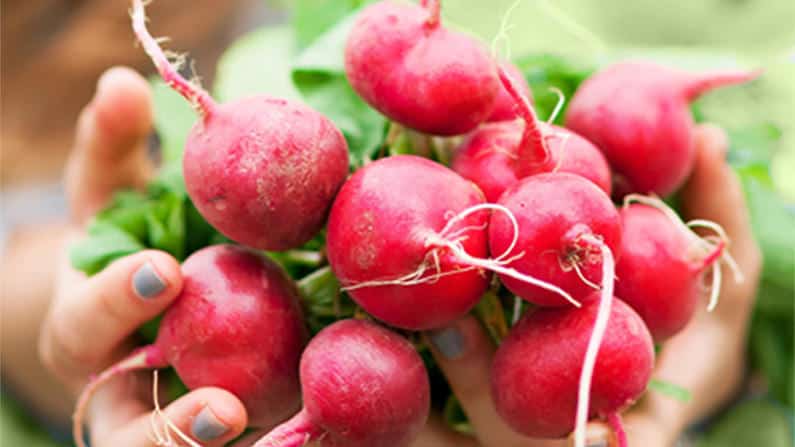
I’ll share everything with you I wish I knew when I started gardening. And I’m excited to help you get started!
There’s a lot of gardening information out there. And it can be overwhelming. Some information you’ll find is good—some isn’t so good.
- We’ll avoid the overwhelm and focus on the must-know gardening essentials.
- You’ll learn from other gardeners’ mistakes (including mine).
- And I’ll steer you away from old wives’ tales and gardening myths that’ll waste your time and money.
Develop a good gardening mindset.
Learning how to think like a gardener will get you off to a great start. There are three habits of great gardeners you should develop.
- Great gardeners educate themselves.
- Great gardeners keep good records.
- Great gardeners develop curiosity, patience, and a sense of humor.
Great gardeners educate themselves
Invest in a modest gardening library. Learn more about the type of garden you want to grow and buy a few books about it.
There are books for beginners about starting all types of gardens.
See my list of the best gardening books for beginners.
After you’ve purchased a few beginner-level books, add books to your library that are relevant to where you live.
If you have a garden and a library, you have everything you need.
-Marcus Tullius Cicero
You can find books about gardening in your state or your part of the country.
When you have a specific question that your gardening library can’t answer, do some research online.
The Best Gardening Books For Beginners
Prices last updated on 2025-07-09 at 21:54
Find reliable gardening information online
The best place to start any gardening research online is your state’s cooperative extension website. Every state’s land-grant university runs a cooperative extension. And every cooperative extension has a website.
Your state’s extension website is a fantastic free resource for scientifically-based local gardening information. They focus on issues and challenges unique to your state.
Pro tip:
If you can’t find an answer to your question on your state’s extension site, do an advanced google search and type “.edu” in the “site or domain” field.
Even if your extension office hasn’t answered the question, it’s likely that another one has. Restricting your search to .edu sites is an easy way to find those articles.
Get to know your local extension office
Cooperative Extension offices are manned by extension agents and master gardeners. They’re experts at gardening in your region.
I trained to be a certified gardener at my local Colorado extension office. So I can vouch for the depth of training they offer. They know their stuff!
- They can answer your basic gardening questions.
- They can also help you with advanced gardening problems like diagnosing plant diseases and identifying insect damage.
- Extension offices offer soil testing services, something we’ll discuss in Gardening 101, Chapter 4.
Pro tip: Many extension offices offer inexpensive gardening classes. Find out if yours does, and sign up for one.
Visit local botanic gardens
Find local botanic gardens in your area to learn about what plants grow well where you live, and get inspiration for garden design and layout.
When you visit the gardens, take a camera, and note any plants that appeal to you.
- But research the plants when you get home to see if they’re beginner-friendly.
- Many botanic gardens stretch the boundaries of what’s possible in your area by using advanced gardening techniques.
- We’ll discuss how to identify plants that do well for beginners in Gardening 101, Chapter 3.
- Botanic gardens may also offer gardening classes. Find out if yours does, and consider enrolling in a beginning-level gardening class.
Quick tip: For the best possible results, download my free printable Garden Design Workbook that includes bonus garden design graph paper.
Great gardeners keep good records
The best way to learn about gardening is to record what happens in your garden.
Keep track of what works and what doesn’t in a garden journal.
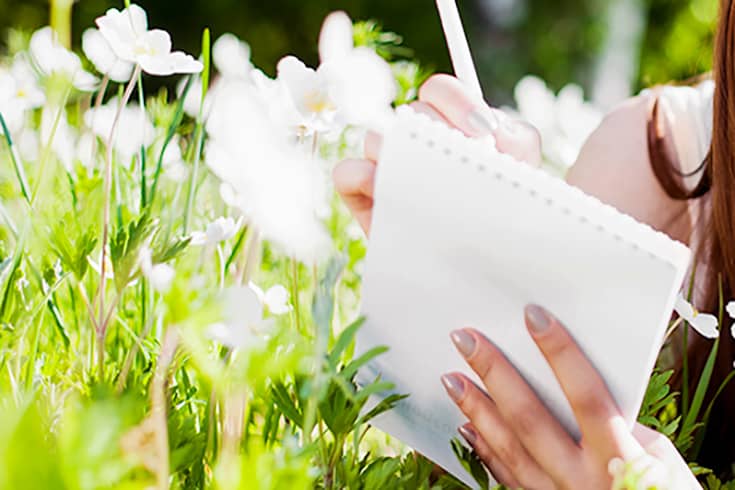
How to create a garden journal you’ll actually use
There are two main records that great gardeners keep: written and visual.
Your journal format can be digital or analog. You might prefer digital because electronic files are easily searchable.
There are lots of different ways you could keep a garden journal:
- Take digital notes in a spreadsheet, word document, or an app like Evernote.
- Hand-write notes in a printable journal that you keep in a 3-ring or Circa binder.
- Draw or sketch pictures of your garden.
- Take photos with your camera or phone.
There’s no right or wrong way to capture your observations. The important thing is to find a method that works for you.
I tend to combine digital and analog. It partly depends on what I’m doing in the garden and how dirty I am. Sometimes I handwrite notes on the spot and then transfer them to my Evernote gardening journal. Other times I enter things right into Evernote.
I also take tons of photos because they convey information on a macro scale that notes can’t capture. And I can attach images to notes in Evernote.
Take action: start a garden journal today.
Pro tip: I take photos of my entire garden once a month throughout the year. They help me see the transitions the garden goes through over those 12 months.
To keep good records, you must make good observations. And to make good observations, you need to be curious.
Great gardeners develop curiosity, patience, and a sense of humor
Curiosity
Observing incremental changes in your garden can be difficult. From day to day things don’t seem to change much.
But there’s a day every summer when the first cucumber beetles arrive, or the first praying mantis lays eggs in your yard.
Make sure you’re there to see it.
Training yourself to become a curious observer will make you a better gardener because you can react quickly to small problems before they become big ones.
Looking for problems is a good habit to develop.
If you notice a plant has some leaves that are drooping or don’t look right, curiosity about the change in the leaves will lead you to a solution.
But also look for things in your garden that delight you – the first flower buds or tomato of the season, or the last hummingbird. Keeping track of the “firsts” and “lasts” of the living things that inhabit your garden will not only make you a better gardener but will also deepen your connection to nature and the fascinating wonders of life.
A garden is a grand teacher. It teaches patience and careful watchfulness; it teaches industry and thrift; above all it teaches entire trust.
— Gertrude Jekyll
What things should you look for in your garden?
- Signs of insects, disease, or other pests
- Over and under watering
- Nutrient deficiencies
- Seasonal changes
- What animals are visiting your garden
Vegetable gardens are more likely to develop problems with insects and disease. We know the vegetables we grow are delicious, and so do other critters! Consistent and careful observation will reduce insect, disease, and weed problems in your garden.
Even if your vegetable garden has few insect or disease issues, other problems can pop up. Maybe your tomatoes have flowered but set no fruit, or they’ve grown a ton of foliage, but haven’t flowered. Those are cultural issues most likely caused by temperature fluctuation and over-fertilization with nitrogen.
Related: What is NPK?
Keeping a close eye on symptoms will help you pivot and course-correct and can mean the difference between getting some tomatoes and getting none.
- Visit and walk through your garden regularly.
- But don’t just stroll through the garden.
- Really look at it.
- Stay curious.
Turn over leaves and look between the foliage of your plants, especially plants prone to disease or insect infestations common in your area. Most plant pests like to hide on the undersides of leaves, or inside the canopy of the plant.
What tools should you use to observe your garden?
- Use a magnifying glass, a loupe, or even a microscope when necessary.
- Take your garden journal out into the garden with you.
- A bug net and camera can also be good things to have handy.
- A couple of good insect and disease field guides are good tools to have.
Garden Observation Tools
Prices last updated on 2025-07-09 at 21:54
Observe the changes in your plants through the seasons. Take time to look at your trees, shrubs, and perennials – look at the leaves, branches, bark, flowers, and any fruit they may have. Over time you’ll learn what’s “normal” for certain plants. Not all plants do what we think they’ll do.
For example, there are non-evergreen conifers that lose their leaves or needles in the winter. If a plant in your yard surprises you like that it can be quite a shock. So, always learn as much as you can about the plants in your yard.
Related: Not sure how much sun your garden gets? Download a free sun calculator for your garden.
Two years ago my husband asked me why one of the beauty bushes we planted out front was yellow. To him, it didn’t look right. And I wasn’t sure why it was yellow.
So I looked back through my garden journal and realized I’d purchased three beauty bushes, but one was a variety with yellow leaves. I’d bought them several months apart and wasn’t paying attention to the specific varieties when I planted them. The yellow one needs more shade than our front yard provides, so I switched it to a shadier location.
If I hadn’t known the leaves were supposed to be yellow I might’ve changed how I was watering it, or fertilized it, thinking there was a nutrient deficiency.
It’s also important to know which plants require pruning or deadheading during the growing season. Some perennial flowers require little attention, while others produce flowers like mad and need to be deadheaded regularly.
Observing is the first step on the journey to good record keeping. The next step is to collect that data and keep it in a format that will be useful to you. Think about what format your garden journal will take. Does paper or electronic appeal to you?
Patience
Nothing teaches patience like planting perennials.
One of the biggest challenges you’ll face with a new flower or perennial garden is the puny size of your new plants. It’ll be a test of your patience to properly space those plants so they have the room they’ll need to grow and flourish.
It can also be disheartening when you realize that for the first year or two your dream garden lives mostly in your imagination, and not in your yard.
I have three words for you to remember as a new flower gardener. Sleep. Creep. Leap.
- Sleep: Your perennial plants will look like they’re dozing the first season you plant them. They’re putting down roots after being transplanted, so almost all of their growth is underground — where you can’t see it.
- Creep: In the second year, your plants will have enough new roots established to start putting out new growth above ground. It won’t be a lot, but you can see how your garden will look in a year or two.
- Leap: The third year is where your plants will take off. And you’ll know for sure if you’ve given them enough elbow room.
Gardens are defined by change. You and your garden will evolve together.
For new vegetable gardeners, patience comes with knowing when it’s okay to put certain plants out in the garden. It’s easy to get caught up in spring fever and plant things because the days are warm. But there are basic rules to follow when plants should go out in the spring. We’ll cover that in Gardening 101, Chapter 2.
Related: When to Plant a Fall Garden
Pro-tip: Another way to exercise patience is to avoid plants labeled “fast-growing.” Don’t fall for the false promise of an instant anything in the garden by purchasing “fast-growing” plants. If these plants are recommended for your area by local gardening experts, it’s ok to plant them, but frequently they won’t be ok.
We’ll discuss “right plant, right place” and how to identify plants that’ll do well where you live in chapters 2 & 3 of Gardening 101.
Learn how square foot gardening can save you time in the garden.
Sense of humor
Finally, to be a successful gardener it’s important that you have a sense of humor.
You can express that literally in your garden with whimsical garden decor or garden humor.
But more importantly, cut yourself a break when you screw things up. If you can’t laugh about the mistakes you’ll inevitably make (we all make them) you’ll either give up or be a miserable gardener. And gardening is all about having fun.
Gardeners who can laugh at themselves can try new things and not get defeated when things don’t go as planned. Gardening helps you maintain a sense of perspective on life.
It teaches you to let go when things are out of your hands and celebrate when it all works as planned.
Think about why you want to start a garden.
What’s your gardening goal?
There are many reasons to start a garden. Consider what’s motivating you to do it. Knowing the reason(s) why you want to start a garden will help you make good choices as you go through all the steps of starting a garden.
Do you want to grow a garden that supports wildlife?
Suburban and urban gardens can be important pockets of habitat for many types of birds, insects, reptiles, and amphibians.
Will you be gardening with your family?
If you have kids who will be helping you in the garden, be mindful of starting them with plants that are easy and quick to grow.
Are you looking for a way to unplug or get more exercise?
Gardening improves mental health by connecting you to nature and the beauty of living things. And gardening is a way to work moderate exercise into your daily routine.
Do you want to feed your family with your garden?
Vegetable and herb gardens are the rage right now. Having access to locally-grown, high-quality food supports the environment and your health.
But why limit yourself to vegetables and herbs?
All new gardeners should consider growing things that are beautiful and useful. My preference is to grow a combination of edible and ornamental plants. A garden that incorporates both can produce fruits and veggies for you and will (almost magically) turn your yard into a habitat for many types of wildlife.
Take action: Write your gardening goal in your garden journal.
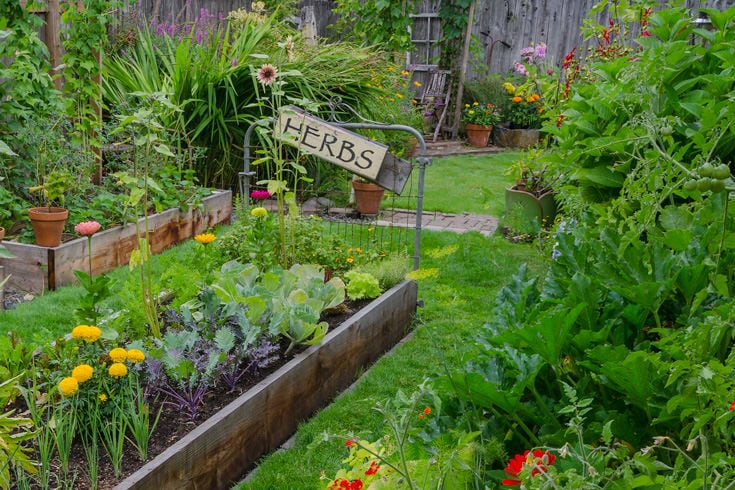
Decide what type of garden you want to grow.
Take a few minutes to answer these questions. They’ll help you narrow down the type of garden you want to start with, and get you thinking about plants that appeal to you.
What plants do you love?
Think about what plants make you happiest, and start there. Consider a few gardening scenarios. See if any make you say “YES I would love to do that!”
- Would you regularly spend time in your herb garden, touching the leaves and smelling the delicious scents while you harvest fresh herbs for dinner?
- Would you gaze at your vegetable patch while dreaming up recipes?
- Would you spend time studying the birds and insects that will visit your flower garden?
Think about what you would do in your dream garden. When you get a picture in your mind that resonates with you, you’ll know how to choose what you’ll love to grow.
You’ll learn how to choose the right plants for your garden in chapter 3 of Gardening 101.
Do you want beautiful plants on your porch, deck, or patio?
If so, you’ll want to start a container garden. All but the largest plants will grow well in containers.
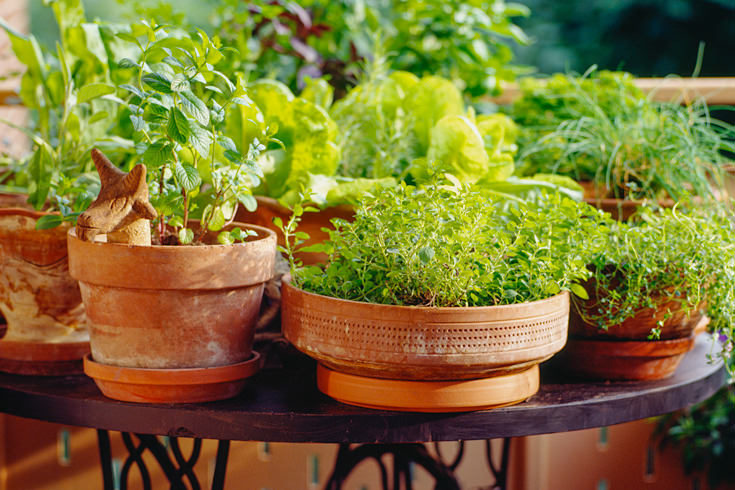
As a beginner, focus on what’s easiest to grow in pots.
The best plant choices for first-time container gardeners are herbs, annual flowers, and certain vegetables.
Are you interested in growing edible plants, ornamental plants, or a combination?
Ornamental gardens
If you want to grow flowers, one thing to consider is whether you want to grow annual flowers or perennials.
Well-designed ornamental gardens incorporate a combination of annuals and perennials.
Annuals grow, bloom, and die in one season. Some plants sold as annuals are perennials from tropical areas, and can’t survive a frost.
Per plant, annuals are cheaper than perennials. But they must be purchased and re-planted every year.
Many annuals are easy to start from seed. But to increase your chances of success as a brand-new gardener, buy plants from a nursery (at least in your first year as a gardener).
Many gardeners prefer to limit their annuals to containers. Containers full of annuals are a way to have a constant pop of color in the garden, and you can move them.
To keep containers looking good through an entire summer, you may need to replant or rotate them out several times a season. This depends on how long your summer growing season is, and what annuals are available in your area.
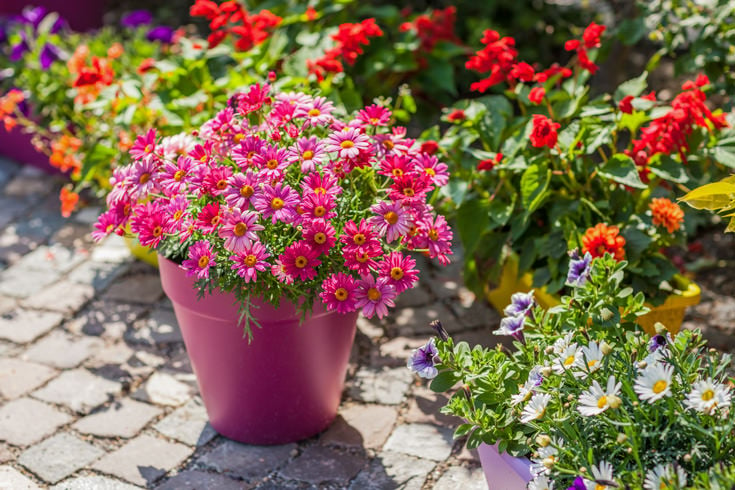
Perennials can last for many years and require no annual financial investment. But they’re typically more expensive per plant.
Perennials don’t live forever and will take several seasons to reach their mature size. And they usually have a shorter bloom time than annual flowers.
Fall-planted bulbs are a great way to add color and diversity to your garden. Most bulbs are easy to plant and care for. Many will also spread over time – look for the word “naturalize” in the description.
Bulbs can be planted between perennials. But consider their color, width, height, and bloom time when deciding where to plant them. Also remember that after the flowers fade on bulbs, you must leave the foliage in the garden until it turns an unattractive yellow or brown color. The bulbs need those leaves to store up energy for next year.
Good beginner bulbs include daffodils, hyacinths, alliums, and crocuses.
The Best Flower Gardening Books For Beginners
Prices last updated on 2025-07-09 at 21:54
Shrubs and trees are an essential part of any landscaping plan. They are the “bones” of a well-designed garden. Consider adding shrubs and trees if your yard has the room.
BONUS: As a bonus for joining my weekly newsletter, download a free Garden Design Workbook.
Many trees and shrubs have flowers and can add dramatic shape, color, and texture to your garden. They’re especially useful as foliage plants, giving a nice leafy background for your flowers.
When chosen and placed properly, they’ll enhance your annual and perennial flowers. So remember that as you create your garden plan.
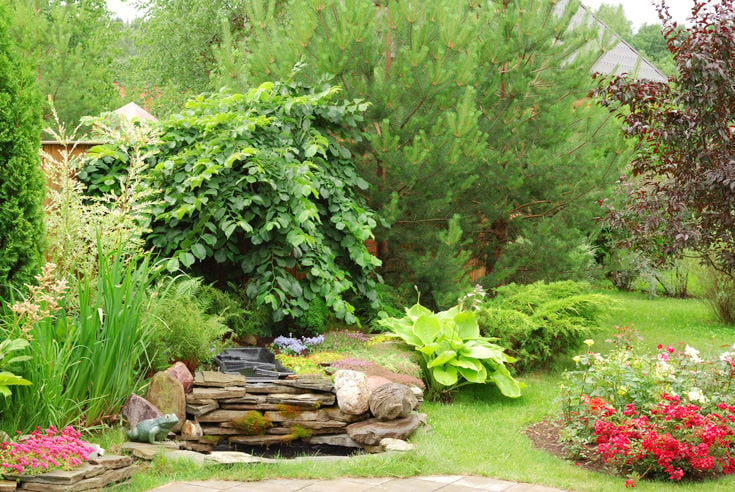
Turfgrass may be an element you want to include in your plan. More likely, you already have a lawn and need to know how to care for it properly. If you live in an area with water restrictions or serious drought, you’ll want to consider alternatives to Kentucky bluegrass lawns.
Ornamental grasses are becoming more and more popular, especially in areas prone to drought. They add texture and movement to a garden and provide winter interest.
Succulents and cacti are incredibly hot right now. Who can resist these unusual and striking plants? If you have the right growing conditions (sunny spot and well-drained soil) or can grow them in pots, consider adding succulents or cacti to your plan.
Find out how much sun your garden gets by sun mapping your garden.
Edible gardens
Vegetable gardens take more planning and upkeep than flower gardens.
If you want to grow a vegetable garden, start with the vegetables you and your family love to eat.
If you love to cook, an herb garden could be a fantastic way to get into gardening without committing to a vegetable garden right out of the gate.
Do you want to preserve your vegetables? You’ll need to grow a large vegetable garden.
The Best Vegetable Gardening Books For Beginners
Prices last updated on 2025-07-09 at 21:54
Do specialty gardens appeal to you?
Some types to consider are:
- Butterfly gardens
- Container gardens
- Cutting gardens (for growing bouquets)
- Hummingbird gardens
- Japanese gardens
- Meadow gardens
- Medicinal herb gardens
- Native-plant gardens
- Pollinator gardens
- Rock gardens
- Songbird gardens
- Vertical gardens
- Water gardens
- Wildflower gardens
- Xeric gardens (drought-tolerant)
Take action: Make a note in your garden journal of what types of gardens appeal to you.
Start slow and small.
A postage-stamp-sized garden is much easier to tend than a small farm. And tending a large vegetable garden can turn into a part-time job, especially if you plan to preserve the harvest.
Be realistic about how much time you can devote to gardening. Gardens require regular care: weeding, watering, pruning, and so on. There’s a lot to learn. A garden is a complicated living organism. And if you have a yard of any size, you already have maintenance chores like taking care of the existing plants, mowing the lawn, etc.
A small herb garden will take the least time. Herbs require much less deadheading or pruning than flower gardens do. Most herbs don’t need much fertilizer and aren’t usually bothered by pests.
I want your first garden to be a success. So don’t take on more than you can handle. I know how exciting it is to start your first garden and (like me) you may think you can do everything all at once.
But you can’t do everything now.
I know. I’ve been there.
So, how do you know what’s more than you can handle?
This handy chart will help you gauge how much time you’ll need to grow certain types of gardens.
How many hours per week you’ll spend in the garden
| Hours per week* | Type of garden |
| Up to 2 hours | A small herb garden Or a small to medium-sized container garden Or a small ornamental garden |
| 2-4 hours | A small vegetable garden Or a medium-sized ornamental garden |
| 4-10 hours | A small vegetable garden and a small ornamental garden Or a medium-sized vegetable garden |
| 10-20 hours | A large vegetable garden Or a large ornamental garden |
*If you must hand water, your time commitment will increase significantly.
I don’t want you to see gardening as a time-consuming chore after looking at this chart.
I want you to be realistic about the size of garden you can take care of, and to get you thinking about how to incorporate gardening into your lifestyle.
To do that, spend time each day doing something in the garden. If you can do that, gardening will be a fun, everyday activity rather than a burden.
Starting plants from seed vs. buying plants
If this is your first time gardening, don’t plan on starting anything by seed except vegetables that do better when directly sown into the garden.
Buy seedlings from a local nursery, especially if you want to plant flowers.
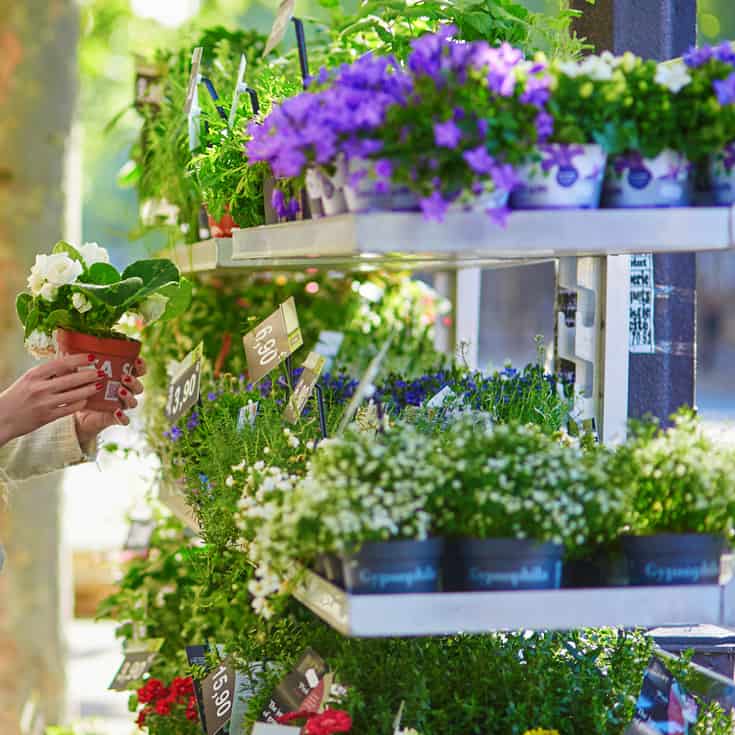
Start plants from seed only after you have a season of gardening under your belt. Once you can keep the plants alive that the professionals started for you, that’s the time to get into seed starting.
Related: Starting seeds vs. buying plants
Organic or conventional gardening methods.
Now that you’ve decided what type and size garden to start, it’s time to think about how you want to handle fertilizing and pest control. We’ll talk about the pros and cons of organic and conventional gardening methods.
Most people would define organic gardening as using only non-man-made “non-chemical” products to fertilize and control pests in their garden. But being an organic purist can be difficult when you have invasive weeds. And organic gardening is more than the packaged products you purchase.
Use Integrated Pest Management (IPM) techniques before deciding to use pesticides. IPM includes a variety of pest management techniques. Mechanical, cultural, biological, and chemical methods are all used when you practice IPM.
Plant health care is the most important IPM technique. Healthy plants have fewer pests.
- Consider whether a cultural practice (such as overwatering) might be encouraging the pest to flourish.
- Decide whether the pest is causing excessive damage or stress to the plant.
- Determine what management option to pursue.
- Start with mechanical methods (physically removing the pest or damaging it) and then progress to using beneficial predators and pesticides.
What I’d like to see you do is use all methods and products (whether organic or conventional) in a responsible and informed manner. Work through the IPM steps before deciding to use a pesticide.
Start with the least toxic and safest methods available, and pursue stronger remedies as a last resort.
Make informed choices before you start blindly following one dogma or the other. As with all things in life, the middle way is usually the wisest. Learn about the pros and cons of each. And make an informed decision.
Always read the safety instructions on any gardening product, including the organic ones. You’ll know if you must wear gloves, eye protection, a face mask, or other protective gear. Stay safe, no matter what methods you choose.
Organic gardening pros and cons
Pros:
- Some organic products can be safer for people and pets. Notice I said, “can be.” Always look at the toxicity level of any gardening product and follow the safety instructions. Even organic pesticides and fertilizers have safety instructions. Remember, these products should kill weeds or pests. So you need to take safety precautions, even if the product is organic.
- Organic fertilizers use up what might otherwise be waste materials from large-scale agricultural operations: alfalfa meal, blood meal, feather meal, and tree and yard waste are examples.
- Organic fertilizers are slow-release by nature. They must be broken down by soil organisms before they become available to plant roots. Look for the OMRI label on organic products.
Cons:
- Organic products may be difficult to get in your area. Consider whether it makes sense to have something shipped to you or not. Many organic products are heavier than conventional ones – especially fertilizers. Their long travel distances – sometimes around the globe, have an environmental impact.
- Organic products are more expensive.
- Organic fertilizers must be broken down by soil organisms before they become available to plant roots.
- Organic fertilizers tend to have unappealing odors – trust me I know. I get complaints from my husband who has a sensitive nose!
- Some organic pesticides and herbicides have limited efficacy. So, you must re-spray multiple times to “kill” weeds, and you may not be happy with the results you get from some pesticides.
- There are questionable “organic” practices that won’t help your garden. There are snake-oil salesmen and old wives’ tales everywhere in life, including from the organic gardening industry. So, if something sounds too good to be true, it probably is.
The Best Organic Gardening Books For Beginners
Prices last updated on 2025-07-09 at 21:54
Conventional gardening pros and cons
Pros:
- Conventional products are easier to find. Many big-box stores carry them.
- Conventional products can be cheaper to buy. Per pound of nutrient, most conventional fertilizers cost less than their organic counterparts.
- Conventional fertilizers can be easier to apply and are usually odor-free or low-odor. And many dissolve easily in water.
- Conventional pesticides and herbicides are produced and scientifically tested to result in specific outcomes. They generally work well for their intended purpose.
- Conventional fertilizers come in a plant-available form. This means they’re immediately available for plants when you apply them. No soil organisms must break them down first.
Cons:
- Conventional pesticides and herbicides, while typically effective for their stated purpose, can be more toxic to humans, pets, and beneficial insects. Start with the least toxic and safest methods available and work up to more toxic methods if the situation warrants it.
- Conventional pesticides can be toxic and lethal to beneficial insects. There is a growing body of research about this problem. So, I encourage you to take a more forgiving approach with the “bad” bugs. Don’t try to eliminate them all from your garden. Instead, learn how to keep them at manageable levels. This will reduce or eliminate the need to use anything that might harm pollinators.
- Conventional fertilizers can damage your garden if you don’t apply them at the correct rates. They can “burn” plants and diminish biological activity in the soil when they’re over-applied. Over application of conventional (and organic) fertilizers can deposit excessive salts in your soil. Like anything in life, moderation is the key. Always follow the instructions on the product label and only give your plants the fertilizer they need. More is not better. We’ll talk more about fertilization in chapter 4 of Gardening 101.
Learn what your plants need.
Every plant has its own particular needs. When you’re able to meet those needs, your plants will thrive.
When you gain more experience you can experiment with pushing the boundaries of those needs. But for now, pay close attention to how much sun and water they need. And be careful about the type of soil they’re grown in and where you place them.
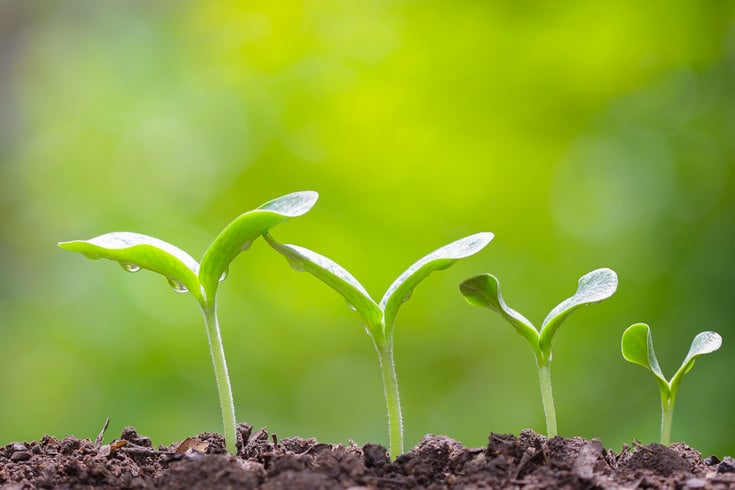
Plants need sun
Plants use the sun’s energy to grow. And how much sun a plant needs (and can tolerate) will determine where you can plant it in your garden. We’ll talk about how to calculate the amount of sun your garden gets in Gardening 101, Chapter 2.
Plants are classified by their need for sun as follows:
- Full sun: at least 6 hours a day
- Partial sun or partial shade: 3-6 hours
- Shade: Less than 3 hours
Proper temperature
Plants do the best when they have optimum temperatures for growth.
How do you know if your garden will have the right temperature for a certain plant?
Hardiness zones, growing season length, and microclimates are the three main factors to consider when deciding if the temperatures in your yard will be right for a certain plant. We’ll talk about these in chapter 2 of Gardening 101.
Water
All plants need water to survive. How much and when to water can be one of the trickiest things to get right when you’re new. But you already have what you need to tell if your plants need water – your sense of touch. The easiest and most reliable way to gauge when to water is to stick your finger 2-3 inches into the soil. We’ll discuss watering in more detail in Gardening 101, Chapter 8.
Nutrients
All plants need nutrients they get from the soil. They can do some miraculous things with sunlight and water, but they do need certain nutrients from their soil (or potting soil if you’re growing in containers). In chapter 4 we talk about adding nutrients to your soil.
Something to grow in
All plants need to grow in some type of growing medium. Every plant prefers a particular type of soil. Many will tolerate less than perfect soil conditions, but some will die if planted in the wrong type of soil.
Getting a soil test is one of the most important things you can do when starting a garden and is often skipped by new gardeners. It’ll tell you what kind of soil you have (clay, sand or loam), and what nutrients you need to add. We’ll talk all about preparing your garden soil in chapter 4 of Gardening 101.
Space to grow in
All plants reach a mature size. You should always take these into consideration when planning your garden. Spacing is important because over-crowding your plants leads to disease and insect problems while spacing them too far apart will detract from your garden design, and leave empty spaces where weeds can take hold.
A relatively weed, insect, and disease-free environment
Managing weeds, diseases, and insects is one of the less enjoyable aspects of gardening. At times it can feel like waging war against tiny invaders. But keeping weeds, diseases, and insects under control is an important part of gardening.
Monitoring your plants is the most important line of defense against insects and disease. The sooner you spot a problem, the easier it’ll be to deal with.
Now that we’ve covered a few basic concepts about starting a garden, we’ll talk about your garden’s climate and microclimates.
Chapter 2 in this gardening 101 series shows you step-by-step how to understand your garden’s climate. It’s an important chapter, so don’t skip it. You’ll get a wealth of knowledge about your garden.
Pin this article to your gardening board.
Read the rest of the chapters in this Gardening 101 series:
- Gardening Fundamentals (you’re here)
- Microclimate Factors
- Garden Design for Beginners
- Start With The Soil
- Choose the Best Mulch for Your Garden
- Grow a Low Maintenance Garden







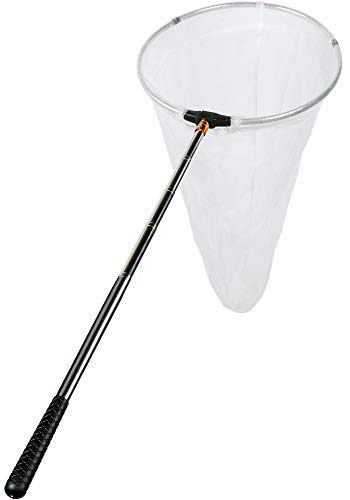











I’m so glad I found this article! I’ve been looking for this kind of article for a while now. Thanks for sharing!
Hi Vic, I’m happy to hear you found it so useful! Good luck with your garden 🙂
Thanks for sharing this gardening process! Very useful!
Thank you for the tips about what you should do as a beginning gardener. My husband really wants to have a nice yard. I think we should hire someone to do it fro us.
Thank you so much for sharing this. I love the content and will definitely share this with others. I can now enjoy gardening with my dad.
Thank you for so much information. I’m overwhelmed, so much to learn before I can even get started.
EileenCorba
Just moved into a house and the garden is a blank canvas. Excellent information, thank you so much.
Hi Eileen, You’re welcome! Blank canvas gardens are scary and exciting all at the same time. Best of luck with it.😊
My work schedule has been freed up enough for me to pick up a new hobby now, so I was thinking of doing some gardening since I’ve always been interested in it. It was a helpful piece of advice when you told us to look up the toxicity level of the gardening products before purchasing them even if they are organic to ensure they are safe for people and pets. I’ll take note of this when I shop for landscape material supplies this weekend.
Hi Elina,
I’m glad to hear that you found my advice on checking the toxicity level of gardening products helpful. Safety is always a top priority, even when it comes to organic products.
I’m excited to hear that you’re interested in gardening and I hope you have a great time shopping for landscape materials this weekend!